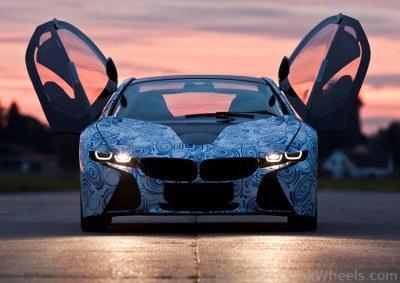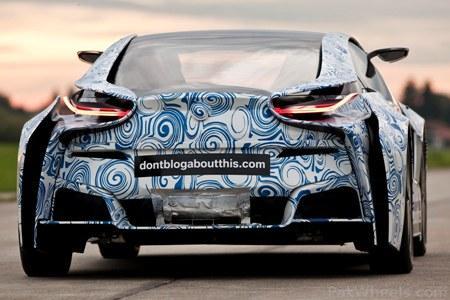BMW CONFIRMS HYBRID SUPERCAR
When BMW showed-off its Vision EfficientDynamics supercar last year in Frankfurt, most observers thought it would be consigned to the illustrious (yet disappointing) position of a great auto show concept car never to germinate into production.
BMW’s research and development boss Klaus Draeger has confirmed otherwise.
Munich is feverishly committed to bringing all the technology and style showcased by the Vision EfficientDynamics show car to market. And soon too.
In fact, Draeger’s been told to ramp-up the car’s testing and homologation programme with the aim of retailing the new supercar by October 2013. Draeger’s team has already done 60 000km worth of testing to this effect.
Of course the production car will not carry the burden of its concept sibling’s silly Vision EfficientDynamics nameplate. It could possibly carry the 'E1' moniker, paying homage to the only mid-engined BMW supercar to go before it - Munich’s brilliant M1 of the late 1970's.
Whatever nameplate it carries, this new plug-in hybrid supercar will be one of the quickest BMW’s yet built, with a sub five-second 0-100km/h time being tabled as non-negotiable.
BMW's diesel-supercar?
Controversially, the drivetrain will feature a blend of diesel and electric power, a combination sure to grate on BMW traditionalists. A three-cylinder, 1.5-litre turbodiesel engine good for 118kW partners with dual electric motors to produce an all-in peak output of 241kW.
True to its hybrid billing, the compression ignition diesel engine acts as an electric generator in frugal range-extender mode, yet is capable of driving the rear wheels directly, via a six-speed dual-clutch transmission, when peak performance is desired.
The two brushless electric motors are each responsible for driving the individual wheels of a single axle each. Up front 80kW of electric drive is available, whilst at the rear, snugly configured next to the diesel engine, is a slightly smaller electric motor capable of 43kW.
Accumulating the performance available from these three engines will be an intricate electronic drivetrain management package developed in-house by BMW.
Although procuring a third-party drivetrain control system may prove cheaper initially, BMW is keen to use the homologation of its Vision EfficientDynamics supercar to develop the company’s electric drivetrain engineering prowess.
Impressive statistics
The new 1.5t supercar will be capable of a 0-100km/h benchmark sprint time of around 4.8 seconds.
Average fuel consumption will tally a low 3.76l/100km with an emissions signature of only 99g/CO2 per kilometre.
On pure electric power it is good for a range of 50km, generously extended by the 24l diesel tank to operational ability of 700km – if driven with exceptional restraint.
Recharging time-tables have been the bugbear of plug-in hybrid vehicles and BMW has recognised this as a potentially frustrating element of ownership.
As such, BMW’s engineers have been tasked to develop a recharging capability able to regenerate the 10kWh lithium-ion battery from a conventional power socket to full power within two hours...
Although its development has been prioritised within the company’s future product planning, BMW is yet to actually name its new hybrid supercar, set to compete for a share of the valuable future low-emission supercar market against Audi’s e-tron, the Mercedes-Benz SLS E-Drive and Porsche’s 918 RS Spyder
The production car’s design is expected to be heavily toned-down from the Vision EfficientDynamics show car’s styling - primarily to accommodate crash safety standards.
When the first mid-engined BMW since the company’s seminal M1 supercar debuts in 2013, it will not be cheap though. Klaus Draeger himself admits this much. "Technology doesn’t come cheap, and this car is packed with everything we know about alternative drive systems."

